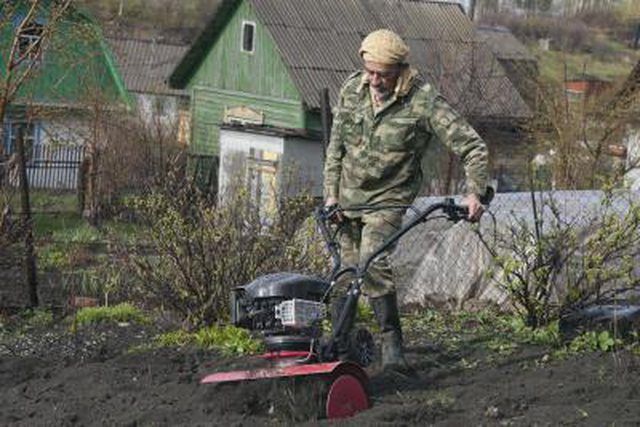Bulbs
Flower Basics
Flower Beds & Specialty Gardens
Flower Garden
Garden Furniture
Garden Gnomes
Garden Seeds
Garden Sheds
Garden Statues
Garden Tools & Supplies
Gardening Basics
Green & Organic
Groundcovers & Vines
Growing Annuals
Growing Basil
Growing Beans
Growing Berries
Growing Blueberries
Growing Cactus
Growing Corn
Growing Cotton
Growing Edibles
Growing Flowers
Growing Garlic
Growing Grapes
Growing Grass
Growing Herbs
Growing Jasmine
Growing Mint
Growing Mushrooms
Orchids
Growing Peanuts
Growing Perennials
Growing Plants
Growing Rosemary
Growing Roses
Growing Strawberries
Growing Sunflowers
Growing Thyme
Growing Tomatoes
Growing Tulips
Growing Vegetables
Herb Basics
Herb Garden
Indoor Growing
Landscaping Basics
Landscaping Patios
Landscaping Plants
Landscaping Shrubs
Landscaping Trees
Landscaping Walks & Pathways
Lawn Basics
Lawn Maintenance
Lawn Mowers
Lawn Ornaments
Lawn Planting
Lawn Tools
Outdoor Growing
Overall Landscape Planning
Pests, Weeds & Problems
Plant Basics
Rock Garden
Rose Garden
Shrubs
Soil
Specialty Gardens
Trees
Vegetable Garden
Yard Maintenance
How to Rototill a Lawn
How to Rototill a Lawn. Think of a rototiller as an underground lawn mower. The blades dig into the soil, breaking up clods and chopping up weeds to create loose soil for planting a lawn. As a laborsaving device, the rototiller replaces the old shovel-and-elbow-grease method of yesteryear, making preparing soil easier and faster. But all this comes...

Think of a rototiller as an underground lawn mower. The blades dig into the soil, breaking up clods and chopping up weeds to create loose soil for planting a lawn. As a laborsaving device, the rototiller replaces the old shovel-and-elbow-grease method of yesteryear, making preparing soil easier and faster. But all this comes at a price.
Earth Grinders
The first rototiller was a souped-up device made by Australian Arthur Clifford Howard from bits of farm machinery. Commercial prototypes with cast iron engines and steel tires -- termed earth grinders -- were imported to the United States from Germany in the 1930s. Today, you can choose among dozens of models, depending on your intent and your budget, from rear-tine models that you only walk behind to lightweight, front-tine models (with forward turning blades in front of the engine) that require upper body strength to restrain the machine from churning forward. Each tills soil to a maximum depth of about 10 inches.
Preparing Soil Faster
Gardeners know that grass grows best in loose, well-aerated soil, and tilling makes the process of preparing soil to receive seed faster and easier. Passing the machine, row by row, over the soon-to-be lawn works the soil to an even depth, rips out unwanted weeds and leaves the plot smooth and ready for seeding. You can also work in soil amendments like organic compost with the tiller, increasing soil fertility. However, tilling is not without its downsides.
Risks and Dangers
A few decades ago, it would have been considered eccentric to pass up the rototiller in favor of earthworms, but modern gardeners recognize the importance of the ecosystem. Earthworm tunnels provide a built-in drainage system for your garden or lawn that is destroyed, along with some beneficial soil fungi, if the entire area is tilled at once. Moreover, tilling soil even slightly too damp compacts it and eliminates the air space plant roots require to grow. If the soil contains clay, it can dry into hard clod or crust over. Tilling can also leave a packed layer of soil just beneath the plowed area that plant roots cannot penetrate.
Lawn-Tilling Basics
If you decide to till the ground for a new lawn, do it in spring a few days after a rain. The soil should be about 60 degrees Fahrenheit and should crumble in your hand. Remove rocks and sticks from the area, and then set the tiller for an appropriate depth; the harder the soil, the shallower the setting. When the tines engage, direct the rototiller in parallel, overlapping passes across the area. When you're done, adjust the tines to their deepest setting and till the entire area again, perpendicular to the first passes.
Working in Soil Amendments
If you want to amend the soil in your new lawn area, you can use the rototiller, if desired. If you choose to do so, layer the compost or other amendments evenly over the soil surface when you finish the initial tilling, and then pass the rototiller again in each direction on a medium depth setting. However, if you want to work in compost early in the springtime, experts at the University of Florida Extension suggest you use an old-fashioned shovel to do the job. You'll avoid issues with too-damp soil and leave the earthworms alone.